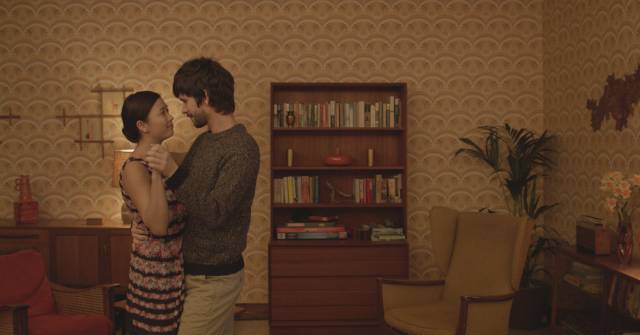
 A few months after Xavier Dolan’s Tom at the Farm, Lilting (by Hong Khaou) surprisingly echoes the young Canadian director’s movie. Telling the comeback of the son’s lover in his family after his death, the two movies concentrate on mourning and the impossible coming-out. In two different ways, Lilting and Tom at the Farm portray the attraction-repulsion phenomena at work between a mother and her son’s lover - their rivalry as well as their irrepressible attraction to each other. Indeed, despite the fact the mother is not aware of her son’s sexual orientation in both movies, the supposed “best friend” that comes to her is a confusing body double of her son.
A few months after Xavier Dolan’s Tom at the Farm, Lilting (by Hong Khaou) surprisingly echoes the young Canadian director’s movie. Telling the comeback of the son’s lover in his family after his death, the two movies concentrate on mourning and the impossible coming-out. In two different ways, Lilting and Tom at the Farm portray the attraction-repulsion phenomena at work between a mother and her son’s lover - their rivalry as well as their irrepressible attraction to each other. Indeed, despite the fact the mother is not aware of her son’s sexual orientation in both movies, the supposed “best friend” that comes to her is a confusing body double of her son.
In Lilting, Richard (Ben Whishaw) feels like he has to help Kai’s mother, Junn (Pei-Pei Cheng), for some reason: maybe because his lover locked his mother up in a old people’s home, or maybe because he would like her to find out the truth about her son. His persistence throughout the movie is, however, suspicious: why is Richard trying that hard to make Junn’s relationship with an old Englishman work? Why is he getting involved that much, to the point of appealing to a bilingual Chinese girl for help?
The movie’s structure is split between Richard and Junn’s memories and the present. Hong Khaou cleverly blurs the boundary between present and past, deliberately using the same shades of color – brown, beige, white and grey – to depict them as the one and only inside world centered on Kai (Andrew Leung). The photography work is, from this point of view, really interesting: Khaou gives to see a faded world ruled by Junn and Richard’s same moroseness by working on the symbolic function of colors. The present echoes the past, bringing back a flow of memories testifying of the two lives he lived at the same time. Kai and Richard’s everyday life is therefore revealed in a fragmented way that gives to see an incomplete portray of their relationship. Indeed, how could this relationship be complete without Kai’s coming-out? The movie clearly shows in what this coming-out is impossible concentrating on the culture gap that exists between the mother and the ex-lover. It goes hand in hand with the generation gap that conveys the tension between tradition, social progress and open-mindedness. The language barrier between them can therefore be seen as a clever metaphor of the difficulty in communicating between generations. It is also a way to highlight the antagonism between two parts of Kai, two realities hidden to each other.
However, despite the finesse in the acting and a rhythm reminiscent of the best of Japanese cinematography such as Ozu’s films, the effect of repetition is regrettable. Indeed, the idea of mixing past and present is relevant inasmuch as it avoids linearity, but this technique leads to a binary structure that is, in the end, almost boring. Khaou never really shakes up the symmetry of the narration he built, all the more as neither the rhythm nor the shot composition are really inventive…except one of the last shots, that is surprisingly audacious compared to the rest of the movie: a panoramic shot revolving on itself, giving to see Kai and his mother, Richard and the Chinese translator (see the picture), and finally Kai and Richard dancing together. The shot reveals gradually each couple through its movement, depicting an intense moment of poetry. Through this shot, Khaou finally manages to convey what he meant about the universality of mourning and love.